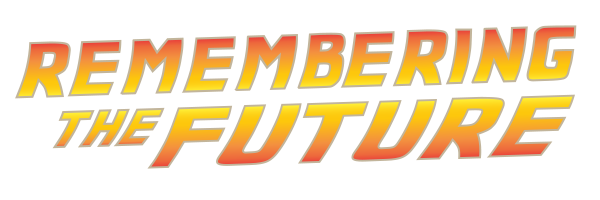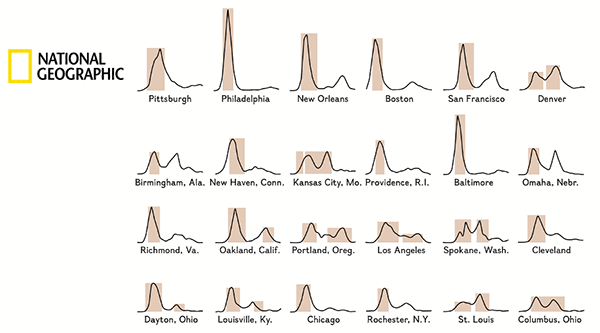The 2nd of June, 2020. The United States of America. More divided than united at the moment, still fighting the worst pandemic in the last 100 years, and for the past week nightly aflame with civil unrest.
How does this story end?
How do protests end? How do pandemics end? How does life ever go back to a pattern that feels normal?

I’m an entrepreneur. I have been for almost 30 years. Part of that job is to see the future. With all the madness, the lecture I gave to my fledglings this morning was on how to “remember the future”, a.k.a. how to figure out what will happen in the near future.
The process is simple. If you want to see what is coming, find similar events in the past, read and research, figure out what is different, and scale up or down. That will give you a good first guess.
1968
Days of civil unrest in America… start with 1968. There were protests after Martin Luther King Jr. was assassinated in April. How did they end? The history books point to the Fair Housing Act (one of the Civil Rights Acts), pushed forward and passed by President Johnson a week later.
But that wasn’t the last of the protests in 1968. There were days of protests in Chicago in August, four months later, outside the Democratic National Convention. The ended after the convention ended.
In both cases, and in every other protest I know before 2010, the mass protests ended within a week. Why?
That question goes unanswered in the histories. However, in 1968 and in the hundred years of protest before then, it looks like either the protests ended when the protestors were given something of value. That was either legislation, like the Civil Rights Act, or a leader abdicating, like in the Arab Spring, or the President of the universities giving student protestors something to call a victory.
But what goes unsaid and assumed in the histories is that the protestors couldn’t simply keep protesting, as they had jobs to get back to. Given the pandemic, that isn’t true here in 2020.
Over 25% of Americans with jobs in January have lost those jobs as of today. People have time to protest. They have nothing but time until the pandemic ends.
Pandemic
So how does a pandemic end? I wrote an answer to that question three months ago on Quora. That answer has been read over 900,000 times so far (as compared to 100,000 reads for all my previous answers over five years).
Epidemics end in one of three ways:
1- Everyone who can get infected gets infected (see Black Death in Medieval Europe, Smallpox in Age of Exploration Americas, Spanish Flu in 1918–1920)
2- Government action finds everyone who is sick, quarantines them, and prevents further spreading (see Wuhan China, 2020, SARS in China In 2002, Ebola in West Africa, 2018)
3- Transmission slows in warm/dry weather (see influenza, every year)
What have we learned since March? First and foremost, we’ve learned that most people don’t understand how infections spread, how masks work, how exponential growth works, how bad pandemics can be.
We have learned that don’t want scenario #1. We’ve seen the mortality rate reach over 10% when hospitals are overrun. We’ve seen the mortality rate at just 1% when lockdowns make it possible to treat everyone who gets a bad case of Covid-19.
We’ve learned that #2 works, but that most countries are incapable of following this path. South Korea, New Zealand, Australia, and Germany prove it can be done. The United States proves that lack of leadership makes this outcome impossible.
We’ve seen no evidence that #3 will happen. This virus doesn’t seem to slow down from heat, sunlight, or humidity.

So how does the 2020 Pandemic end? Again lets look backward to look forward. This time back to 1918 and the Influenza pandemic. National Geographic published a great article explaining the lockdowns from 102 years ago. As you can see in the graphs above from that article, most cities saw two peaks, not one. Expect the same later in 2020.
But ultimately, how did the 1918 pandemic end? It didn’t. Influenza is affected by heat and humidity, and thus there was a lull in the summer of 1918, but then there was a second global round of infections in 1919, and a third in 1920. By then 50 million people had died. By then scenario #1 had played out.
But the pandemic wasn’t actually over. The pandemic is still with us, only now we call it the annual “flu season.” The disease mutated. It’s not as deadly as it was in 1919 (already deadlier than in 1918), and we now have a vaccine, but this disease still kills between 290,000 and 650,000 people globally each year (vs. 378,000 dead from Covid-19 in five months vs. twelve).
A vaccine for Covid-19 is expected in the first half of 2021. Thus we’re looking today at 15-18 months before the 2020 Pandemic is over. And that assumes the vaccine works, which is a big assumption for a virus that doesn’t always produce lasting immunity for people who are infected and survive.
The Future
The title of this post is remembering the future. But that action isn’t like remembering what you had for lunch yesterday, it’s more like trying to remember what the most popular lunch people ate at the 1968 protests in Chicago or the most popular song sung in 1918. Some memories are hazy. So is the future.
UPDATE: May 2021 — The fourth way pandemics end is through vaccination. A Covid-19 vaccine was just a hope in June 2020 and through a combination of science, luck, and massive amounts of money, we didn’t just get one vaccine, we got a handful.
That is the good news. The bad news is that it will take years to vaccinate the 7.7 billion people on the planet and worse news, too many people are ignorantly opting-out of the vaccine, which will only slow the end of this story.
As of today, the likely end to this pandemic is the same as that of the last. The 1918 influenza pandemic never truly ended, it simply turned into the annual flu season, continuing to kill tens of thousands of people per year. We are headed down that same path for coronavirus, with 2021 simply being year two in a new endemic disease that will continue to kill tens of thousands, if not hundreds of thousands of people each year, for at least the next few decades, if not the next 100 years.














